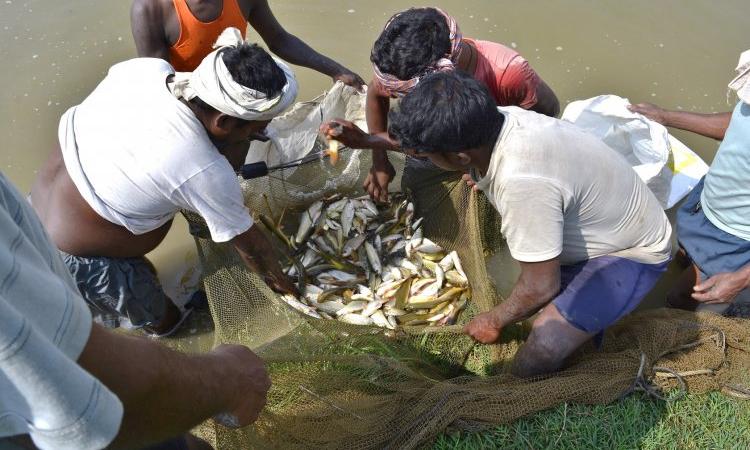
Alarming decline in global freshwater fish species: IUCN
The International Union for Conservation of Nature (IUCN)’s Red List reports an alarming decline in global freshwater fish species. Over half of Japan’s endemic freshwater fishes and more than a third of freshwater fish in Mexico are facing extinction. The loss of free-flowing rivers and agricultural and urban pollution have been cited as the main reasons for this startling decline of freshwater fish species. Along with this, competition with and predation by invasive alien species of fish have also been blamed for the threat. However, according to experts, India's freshwater fish can still be saved by reviving the country's rivers. (Down to Earth)
70 percent dip in groundwater levels in coastal Andhra Pradesh
Out of 701 piezometer points across coastal Andhra Pradesh, 476 have registered a fall in groundwater levels ranging from one metre to three metre on an average. One of the main reasons for this is the deficit in rainfall across the coastal belt. With West Godavari being the worst hit followed by Srikakulam, rainfall deficit across the coastal belt in all the districts is 35.5 percent. To tackle the crisis and meet water demand in the region, the government is planning to dig free borewells. However, experts believe that to be a short term solution as excessive usage of groundwater by digging borewells might lead to seepage of salt water in coastal areas. (Times of India)
After Chennai and Hyderabad, now Jaipur awaits water emergency
Four districts in Rajasthan are left with only 21 days of water, as the Bisalpur dam in the state, which has a total capacity of 39.70 TMC, has only 2.26 TMC of water at present.
The Public Health Engineering Department (PHED) has alerted that the 21 cities and 2800 villages across the districts of Jaipur, Ajmer, Dousa and Tonk will likely receive water only till August 15. However, no action plan has been devised by PHED, which is relying only on tubewells, to tackle the crisis.
Moreover, according to the Groundwater Department, the groundwater level in all 33 districts in the state has touched danger levels. (DNA)
Uttar Pradesh Assembly adopts half glass water policy, mandates rainwater harvesting
In light of the growing water crisis, the UP State Assembly has decided to follow a half glass water policy to conserve water. As per the order, which was implemented with immediate effect, only half-filled glasses of water will be served in all offices and canteens of the Assembly and more water will be served only on request. Along with this, to tackle the depleting groundwater problem in the state, the Uttar Pradesh government has made it compulsory for new residential and commercial buildings to make provisions of rainwater harvesting. (India Times)
Maharashtra to develop water grid for parched Marathwada
The Maharashtra government has drafted a comprehensive plan worth Rs 25,000 crore to develop a water grid. Under the proposed project, water from dams and other reservoirs will be supplied through pipelines to all villages in the scarcity-hit region of Marathwada. In the first phase, 11 major dams in Marathwada will be connected with the pipeline grid by applying the hybrid annuity model, currently used in the roads and highway sectors. The first phase, worth Rs. 4,293 crore was cleared by the State cabinet on Tuesday, and will be implemented in Aurangabad and Jalna districts. (DNA)
This is a roundup of important water-related news published between July 17 - 24, 2019. Also read policy matters this week.
/articles/global-freshwater-fish-species-under-grave-threat-iucn